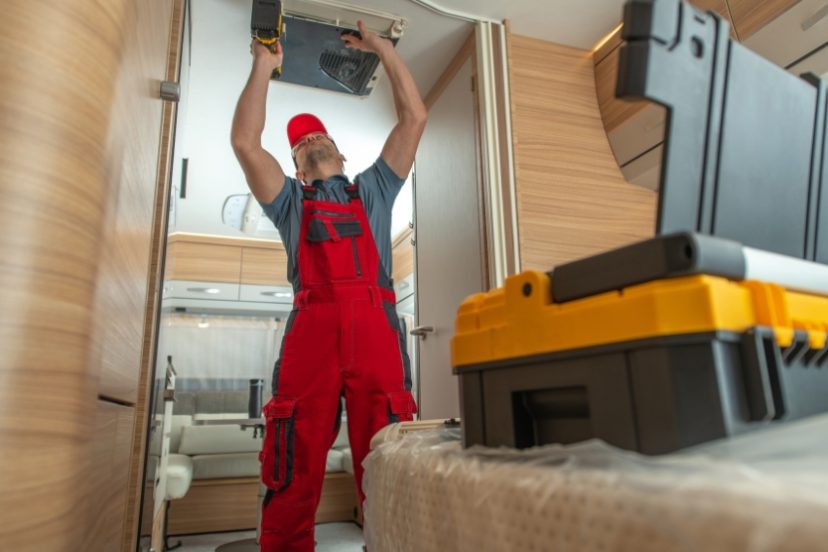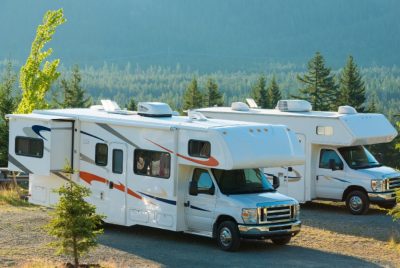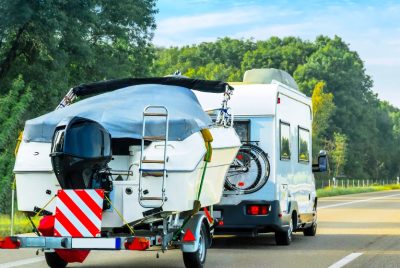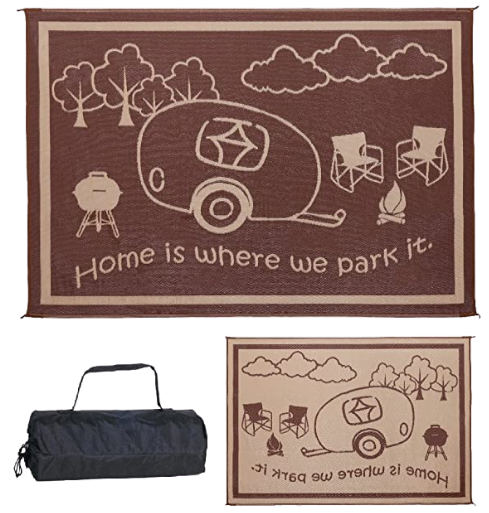There’s something magical about hitting the open road in an RV, watching the landscape change as…
12 Emergency RV Repair Tips When You’re Off‑Grid

When you’re RVing off-grid, problems have a way of showing up at the worst possible times.
A leaky roof when you’re hundreds of miles from the nearest town. A dead battery in the middle of a quiet forest.
A broken water pump when you really need a shower. These situations can ruin a trip if you’re not prepared.
That’s why having a plan for emergency RV repairs is essential for anyone who enjoys boondocking or traveling far from RV service shops.
You’ll learn 12 emergency RV repair tips that every RV owner should know.
These aren’t just quick fixes — they’re practical, real-world solutions that can keep you safe, comfortable, and moving when you’re far from help.
We’ll cover everything from patching leaks to troubleshooting electrical systems. Think of this guide as your go-to field manual for handling RV breakdowns when you’re on your own.
1)) Fixing a Leaky Roof Fast
A roof leak is one of the most stressful problems you can face off-grid. Water damage spreads quickly, and ignoring it can destroy insulation, wood framing, and even electronics inside your RV.
The good news?
You can patch it temporarily until you find a service center.
Quick Tips & Tools:
- Keep a roll of Eternabond tape in your repair kit. It’s one of the best emergency roof sealants out there.
- Clean the damaged area as best you can before applying the tape. Dirt and moisture will weaken the seal.
- For larger cracks or tears, a tube of self-leveling RV roof sealant is a lifesaver.
Checklist for Roof Emergencies:
- Inspect the roof before every trip.
- Store repair tape, a caulking gun, and sealant in your RV.
- Cover patched areas with a tarp if rain is heavy.
2)) Jump-Starting a Dead RV Battery
Your RV battery is the heart of your off-grid system. When it dies, lights, water pumps, and fans stop working.
That’s why learning how to revive a dead battery can save your trip.
Start by carrying a set of heavy-duty jumper cables or, better yet, a portable lithium jump starter.
These devices are compact, easy to use, and don’t require another vehicle. If you do have access to another battery, jump-starting works the same way as it does with a car.
Best Practices:
- Regularly check your battery water levels if you use lead-acid batteries.
- Invest in a solar charger to trickle charge your battery off-grid.
- Carry a multimeter to test voltage before assuming the battery is dead.
Pro Hack: Label your cables with color-coded tape so there’s no confusion in the dark or under stress.
3)) Dealing with a Flat Tire in the Middle of Nowhere
Few things are more frustrating than a flat tire on a dirt road miles from civilization. But with the right gear and know-how, it’s manageable.
Steps to Take:
- Park on level ground and engage the parking brake.
- Use leveling blocks to stabilize your RV.
- Loosen lug nuts before jacking up the RV.
- Replace with your spare and tighten in a star pattern.
Emergency Gear You Should Carry:
- Heavy-duty RV jack rated for your rig’s weight.
- A torque wrench to ensure proper lug nut tightness.
- Tire plug kit for small punctures.
Tip: Always check your spare tire pressure before heading off-grid. A flat spare won’t help you when you need it most.
4)) Repairing Broken Water Lines
A busted water line can turn into a nightmare if you don’t know how to handle it.
Fortunately, there are temporary fixes that can keep things running until you find a replacement part.
What You Can Do:
- Shut off your water pump immediately to prevent flooding.
- Use a pipe repair clamp or strong waterproof tape to seal cracks.
- For flexible hoses, hose repair kits with couplers are simple and effective.
Checklist for Water System Emergencies:
- PEX pipe cutters
- Spare fittings and hose clamps
- Silicone tape for leaks
Carrying these basic supplies means you won’t be stranded without running water.
5)) Restarting a Faulty Water Pump
If your RV’s water pump stops working, it’s usually either a power issue or an airlock.
Troubleshooting Guide:
- Check the fuse first. RV fuses blow more often than you think.
- Ensure the pump switch has power. Use a multimeter if necessary.
- If the pump runs but no water flows, try bleeding the air out of the system by running a faucet.
Tip: Keep a spare 12V water pump in your RV. They’re inexpensive and easy to swap out in an emergency.
6)) Fixing a Broken RV Door or Lock
A jammed or broken RV door is more than inconvenient — it’s a safety risk. If you can’t secure your RV, you’re vulnerable both to weather and to theft.
Quick Fix Options:
- Carry a universal RV lock replacement kit. They’re designed to fit most models.
- WD-40 or silicone spray often frees up stuck mechanisms.
- If the latch fails, you can secure the door temporarily with a ratchet strap.
Pro Tip: Always carry a spare set of RV keys in a magnetic lockbox outside your rig.
7)) Temporary Fixes for a Broken RV Window
Broken windows can happen from road debris, storms, or accidents. While replacing a window isn’t always possible off-grid, you can at least keep the elements out.
Best Emergency Solutions:
- Use clear packing tape or heavy-duty duct tape to seal cracks.
- Apply a piece of plexiglass or thick plastic over the hole, securing it with strong tape.
- Reflectix insulation can double as a temporary cover.
Warning: Never leave broken glass unsecured — it’s a hazard inside small RV spaces.
8)) Patching Plumbing Leaks in the Bathroom or Kitchen
Leaks under the sink or near the toilet can quickly create water damage.
Thankfully, most RV plumbing is made of PEX or flexible hoses, making emergency fixes easier.
Checklist for Fixes:
- Silicone tape for small cracks
- Hose repair couplers for flexible lines
- Adjustable wrench and spare PEX fittings
Tip: Label your water shutoff valves and make sure everyone traveling with you knows where they are.
9)) Dealing with Slide-Out Malfunctions
Slide-outs give you more space, but they can also be a headache if they won’t retract when you’re ready to leave.
Emergency Fix Ideas:
- Check for obstructions — even a small branch can jam the slide.
- Look at the fuses and breaker switches for the slide motor.
- Many RVs come with a manual override; learn how to use it before you need it.
Pro Hack: Carry a cordless drill with the right bit to operate manual override systems quickly.
10)) Handling Electrical Problems Off-Grid
Electrical issues are among the most common problems RVers face. They range from tripped breakers to bad wiring.
Quick Troubleshooting Steps:
- Check your RV’s breaker panel. Reset if necessary.
- Test outlets with a plug-in tester to confirm power.
- Carry spare fuses and replace them as needed.
Resources to Keep on Hand:
- Multimeter for testing voltage and continuity.
- Spare 12V bulbs, fuses, and connectors.
- Electrical tape and wire nuts.
Tip: Never overload your system with too many devices at once. Prevention is the best repair.
11)) Fixing a Broken Awning
An awning failure can turn a relaxing stop into a hassle, especially in windy conditions.
Emergency Fix Tips:
- Carry bungee cords and ratchet straps to secure broken arms.
- If the fabric tears, patch it with awning repair tape.
- Retract the awning during storms to prevent further damage.
Checklist:
- Heavy-duty tape
- Ratchet straps
- Small step ladder
12)) Emergency Heating & Cooling Fixes
Losing your heater or A/C off-grid can make life uncomfortable, even unsafe in extreme weather.
What You Can Do:
- For furnace issues, check propane supply and fuses first.
- Carry a portable propane heater as backup (use with ventilation).
- For cooling, battery-powered fans and reflective window covers help regulate temperature.
Pro Hack: Insulate windows with Reflectix and keep vent covers handy to control airflow.
Conclusion
RVing off-grid is all about freedom, but it also comes with responsibility.
Breakdowns and malfunctions are part of the lifestyle, but with preparation, they don’t have to ruin your adventure.
These RV repair tips are designed to give you confidence when the unexpected happens.
By stocking your RV with basic tools, spare parts, and a little know-how, you’ll be able to handle most emergencies on your own.
Think of it as insurance for your travels — the more prepared you are, the smoother your journey will be.
So before your next trip, run through this checklist, load up your repair kit, and practice a few of these fixes.
When you’re hundreds of miles from the nearest service shop, you’ll be glad you did.





